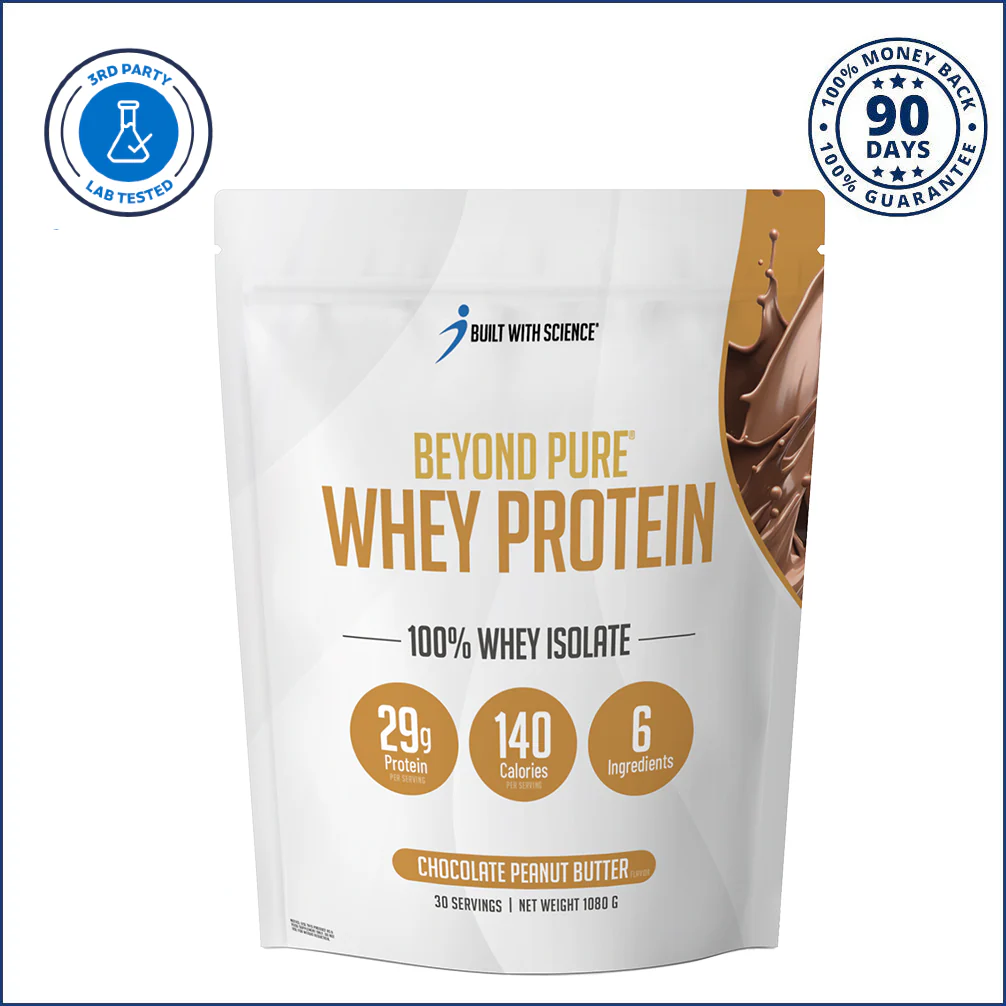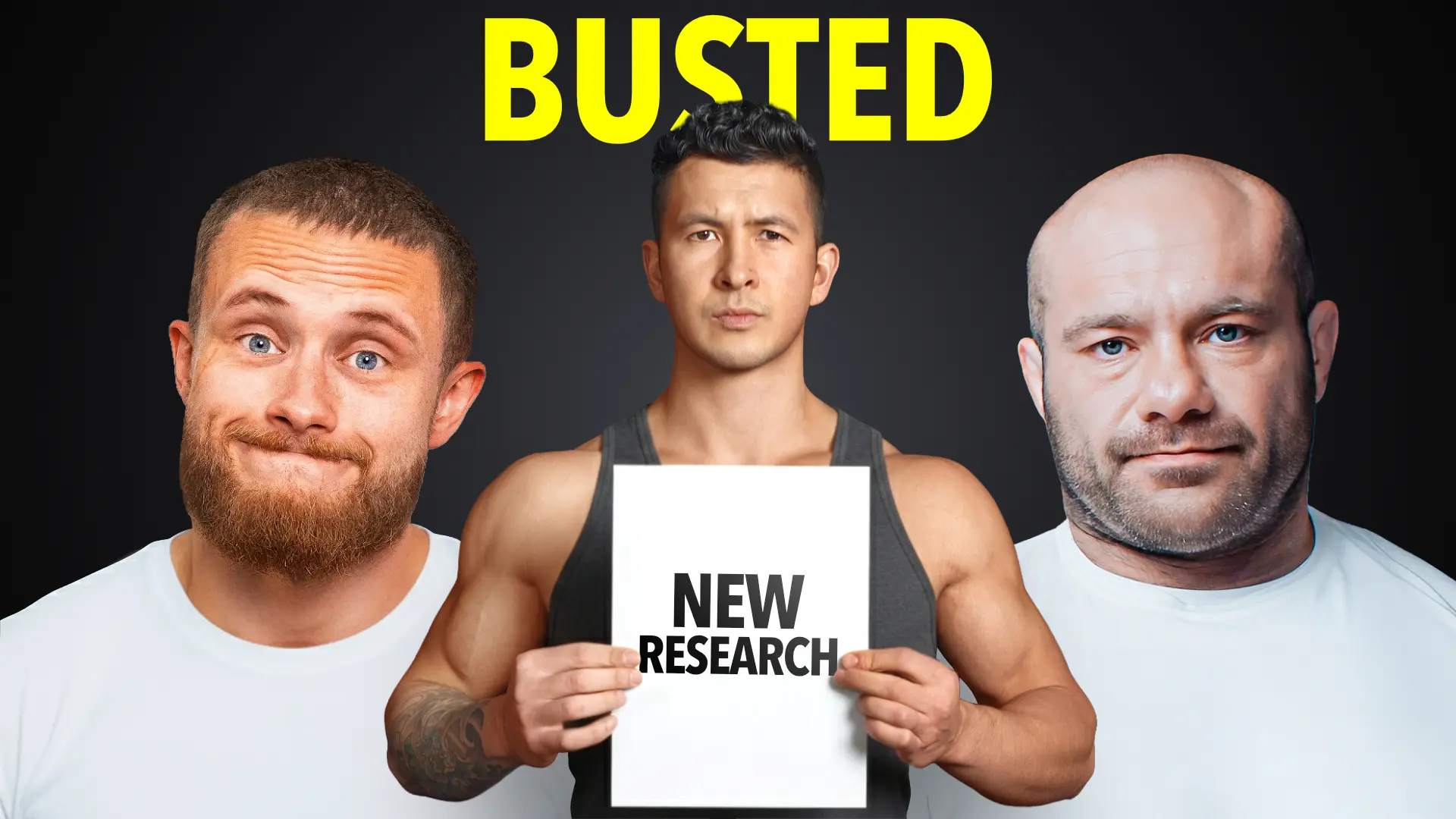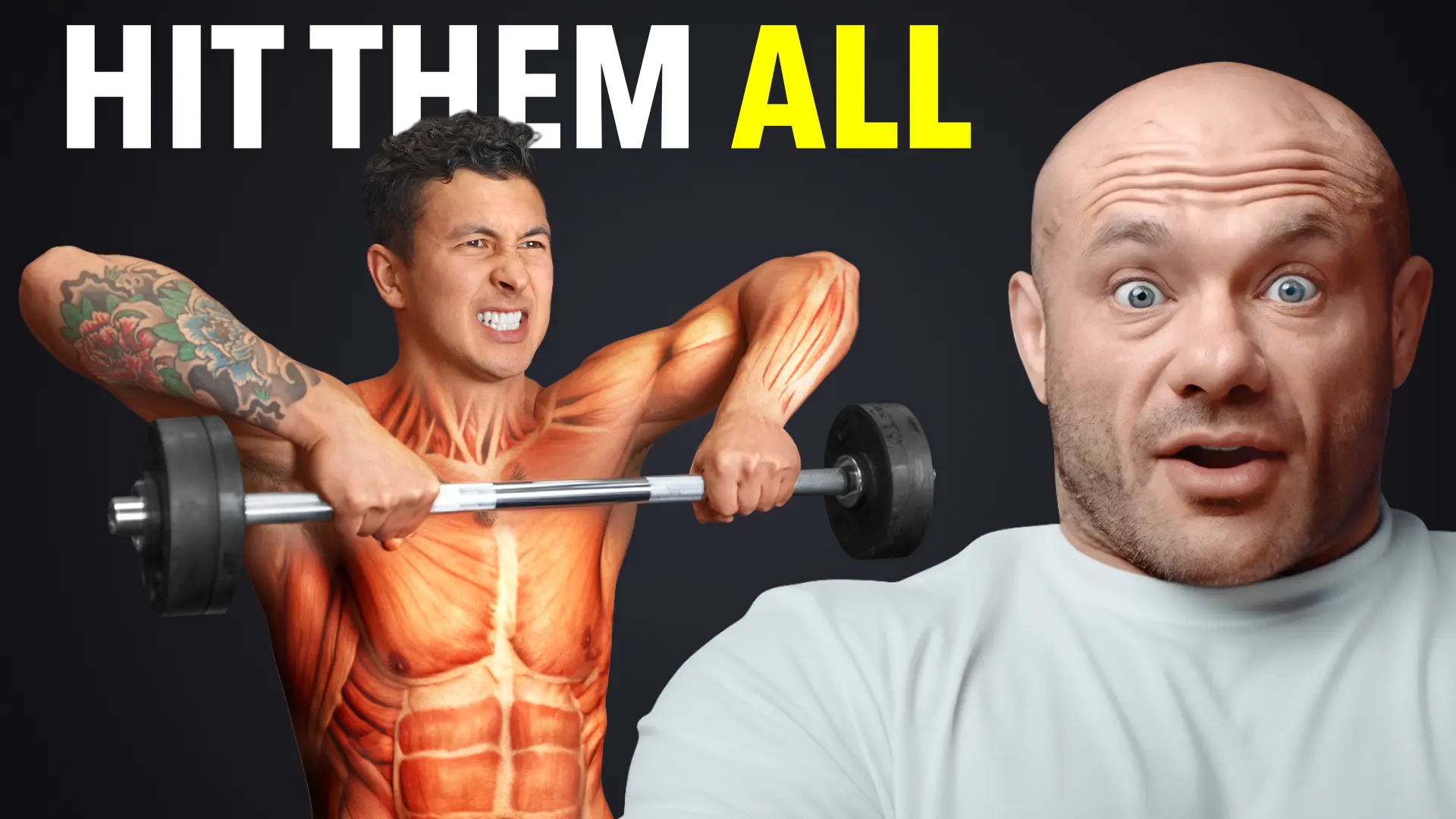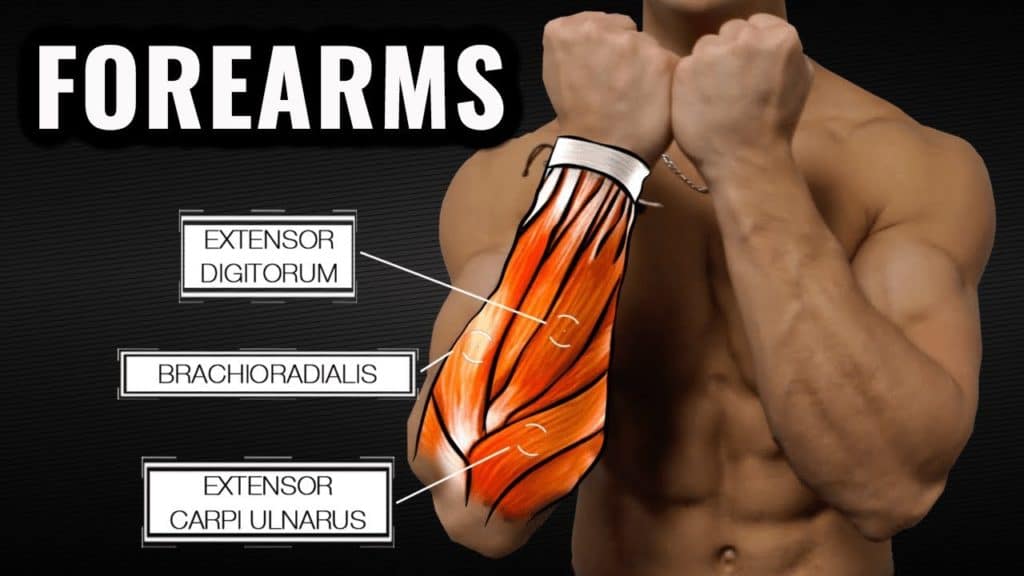
The 5 Best Exercises To Increase Forearm Size And Strength
If you want to know which exercises you should be doing to increase forearm size and strength, then keep reading.
Forearms can be thought of as the calves of the arm. You can have well-developed biceps and triceps, but if your forearms are underdeveloped, then you will have an imbalanced physique.
Forearm workout to increase forearm size and strength
Despite the complexity of the forearm's anatomy, increasing forearm size and strength is simple. You'll see results by...
- Continuing to lift heavy weights, with a particular focus on pulling and curling movements.
- Adding in forearm accessory work after your primary lifts.
For some reason, both calves and forearms are treated differently than other muscle groups. People seem to think that forearms and calves respond differently to training than other muscle groups.
But as with all muscle groups, progressive overload is the primary determining factor of muscle hypertrophy and strength development.
What's the ideal rep range to increase forearm size and strength?
Generally, a mixture of both high reps and low reps tends to be best for size and strength gains.
A recent meta-analysis concluded that regardless of your rep range, muscle growth will be similar as long as:
- Total volume is equated for
- You're training close to failure
- You're using a weight that is at least 30% of your 1RM
A mixture of high and low reps simply tends to be the easiest way to ensure you hit these variables.
The exercises that will work best to increase forearm size and strength will depend on your own physiology, current or past injuries, and your current routine.
Before that: if you're looking for a training program that'll always help you train in the most optimal approach for muscle growth, I've got just the thing for you. Every BWS program is designed to help you transform your physique in the most time-efficient manner. And best of all? It's all rooted in science. For more information on how BWS programs can help you to look better - FAST:
Click the button below to take my analysis quiz to discover the best program for you:
↓
The anatomy of the forearm
In order to address how to train forearms properly, we first need to understand the anatomy of the forearm.
The forearm muscles are complex, consisting of both superficial and deep muscles. To simplify things, the muscles on the anterior side of the forearm are where the flexors of the forearm are.
Flexors
Flexor muscles are primarily responsible for flexion of the fingers and wrists, but also are responsible for the pronation and adduction of the wrist.
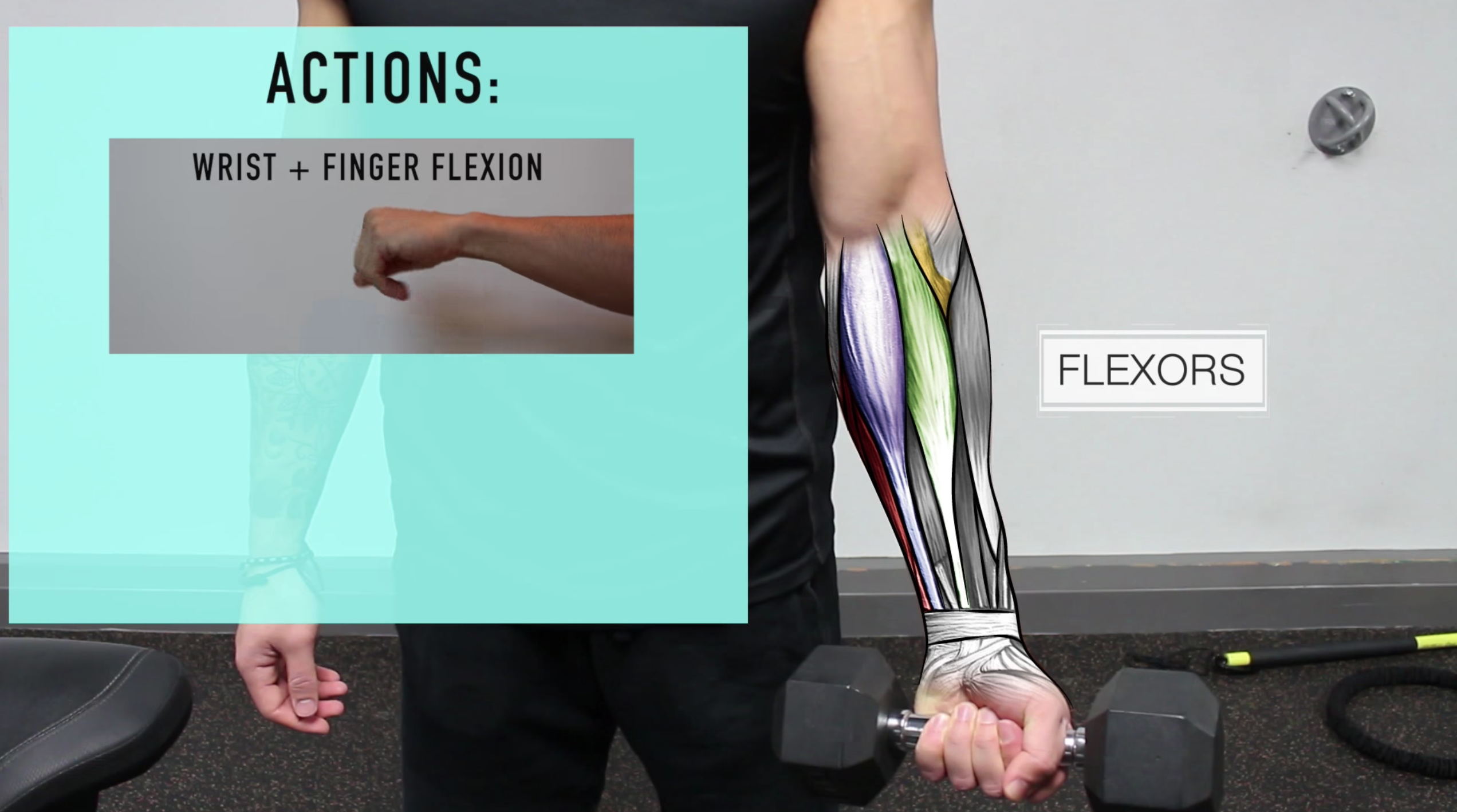
Extensors
On the posterior side of the forearm are the extensors. Extensor muscles have the opposite function of flexor muscles and are primarily responsible for extension of the fingers and wrists.
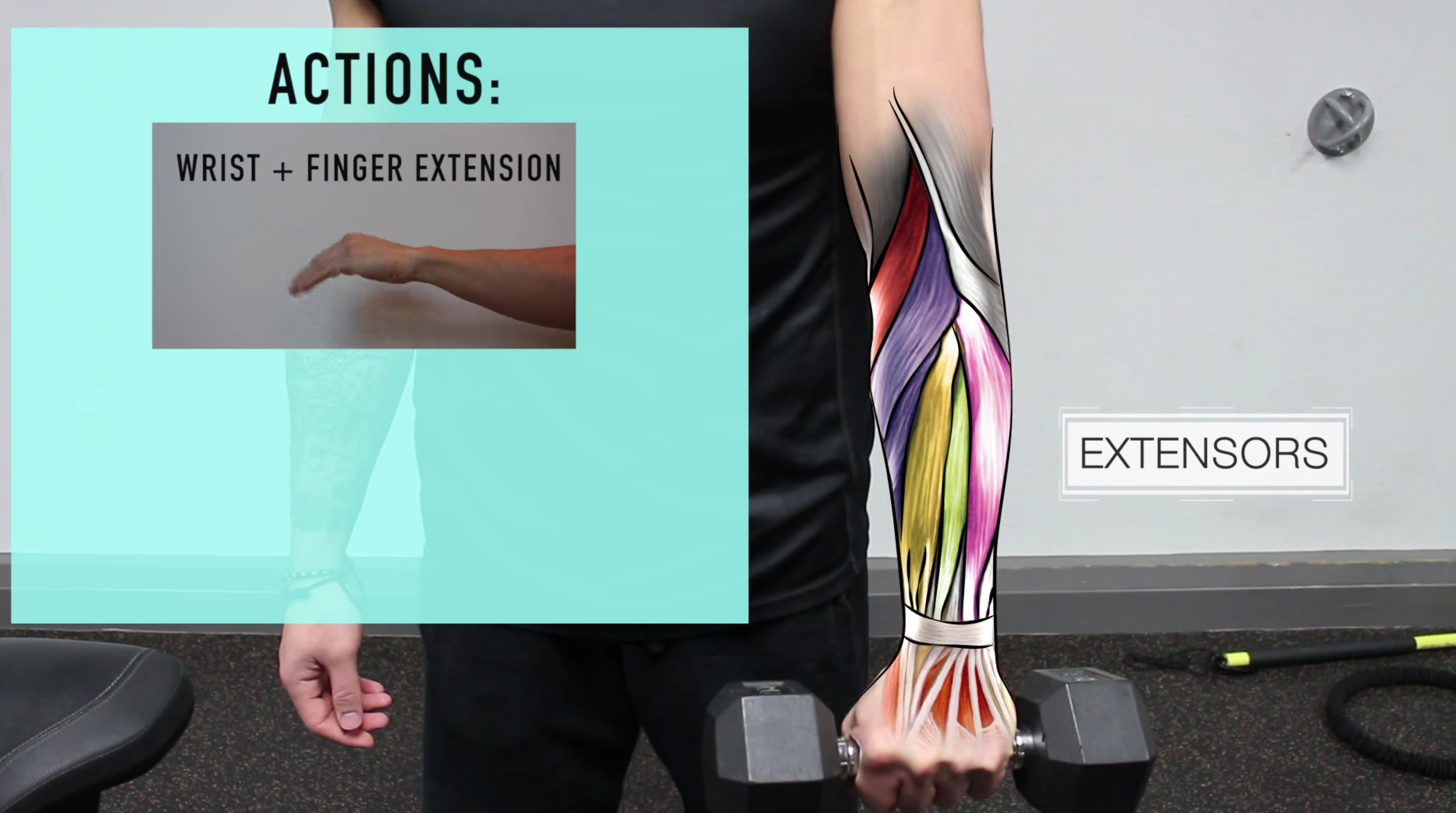
Extensor muscles also help to supinate and abduct the wrist. Both the flexors and extensors contribute to wrist abduction and adduction.
What’s the best way to increase forearm size and strength?
According to one study from the Journal of Physical Therapy, handgrip strength is strongly correlated with forearm size.
This isn't surprising, but it just goes to show that lagging forearms can create more than just aesthetic problems.
A lack of forearm strength can very well be the limiting factor keeping you from progressing on other lifts which require a certain level of grip strength (such as the double overhand grip deadlift).
Many people claim that forearm isolation training isn’t needed given that you do a lot of barbell and dumbbell training. The truth is that for some people compound movements are sufficient for forearm development.
Conversely, people who lack good forearm genetics will need to utilize isolation movements to significantly increase forearm size.
One study concluded that subjects performing forearm training in addition to a regular lifting routine experienced greater forearm strength gains compared to resistance training alone.
The researchers concluded that despite regular lifting increasing forearm development, direct work through isolation exercises is best for maximizing results.
So, which forearm exercises are best for size and strength? Keep reading below to learn how to increase forearm muscle.
Exercise 1: Barbell Suitcase Isometric Hold (aids in grip strength and abductor + adductor involvement)
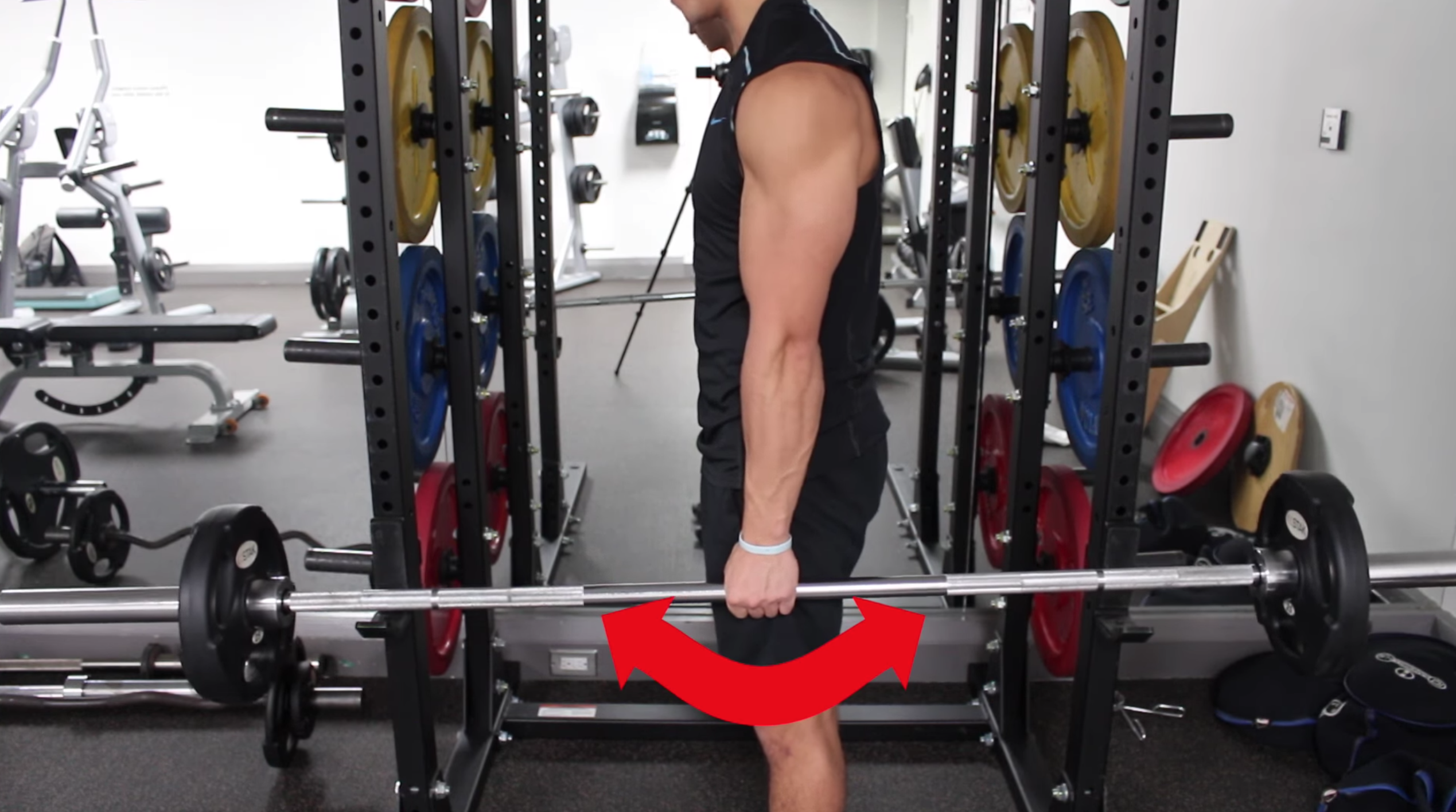
This forearm exercise is perfect for hitting all of the right muscles and improving overall grip strength.
To perform this exercise, simply hold the center of a bar with one hand and prevent it from tipping over on one side.
By focusing on balancing the barbell, you will activate your forearm abductors and adductors to help stabilize the bar. This forearm exercise is great as it tends to be difficult to hit these muscles.
You’ll also notice a lot of involvement of the obliques, which occurs to prevent you from falling to one side.
To progress this exercise, simply load it with more weight or try to increase the length of time you hold the bar.
You can also perform this isometric hold while walking (similar to a Farmer's walk), which will increase the demand for stabilization.
However, this is, for the most part, an isometric exercise. Research has made it clear that dynamic movements are superior for hypertrophy (study, study).
Although this exercise will help with grip strength, we need to also add in some dynamic movements to maximize forearm hypertrophy.
Exercise 2: Standing Wrist Curls (flexors of the forearm)
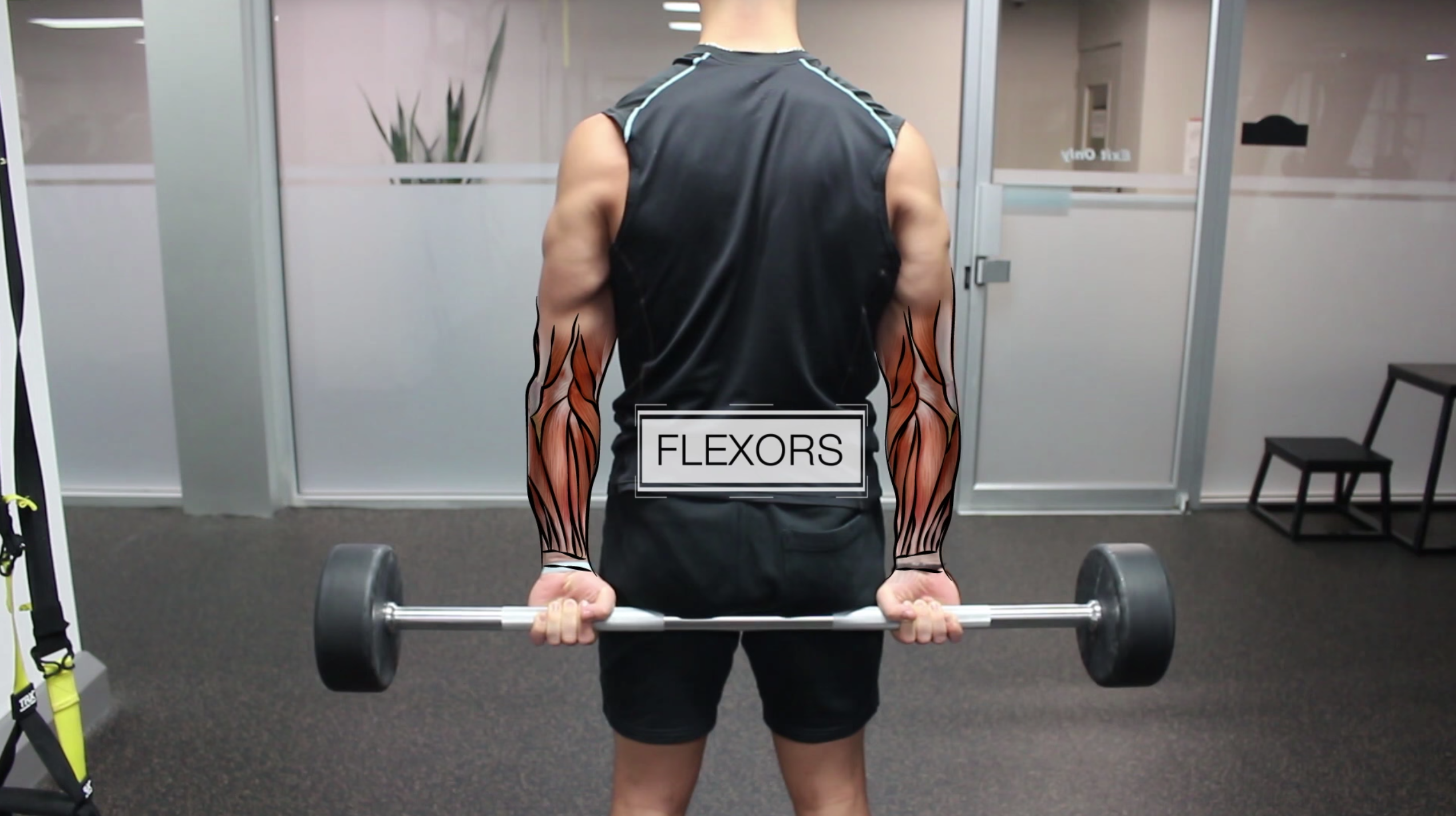
This exercise is likely your best bet in terms of working and strengthening the flexors on the anterior side of the forearm.
Simply hold a bar behind your back, let the bar drop down to your fingertips by extending them, and then bring the weight back up by curling your fingers and wrists upward.
This simultaneous finger and wrist flexion will enable a better contraction since both are important actions of the flexors of the forearm.
To progress on this exercise simply use a heavier bar as you get stronger.
I prefer this exercise to wrist curls on the bench as it requires less wrist flexibility and also causes less stress on the wrist joint which tends to be fragile.
I would recommend exclusively using this exercise if you're prone to wrist injuries.
Exercise 3: Standing wrist extensions (Extensors of the forearm)
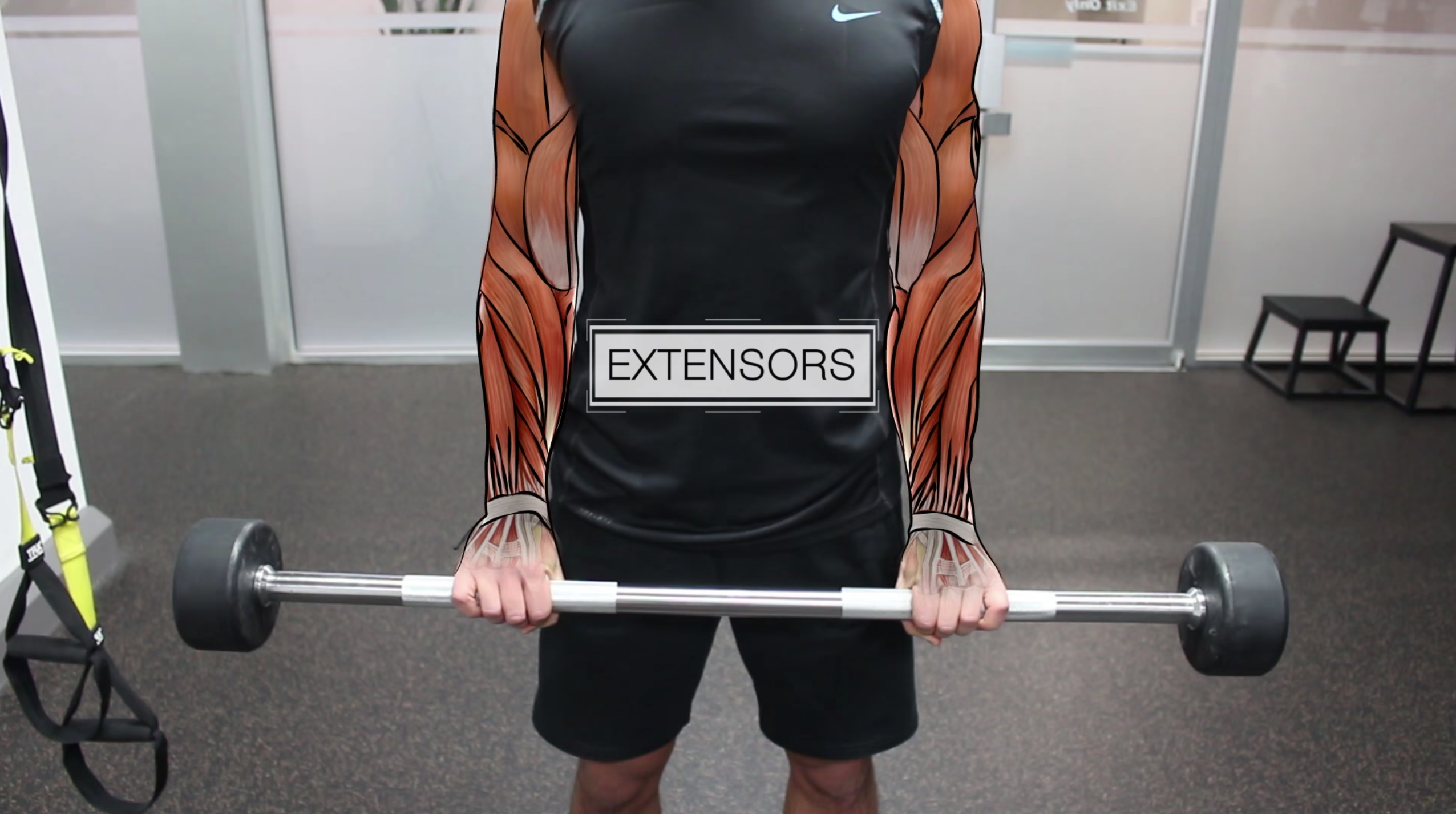
I recommend supersetting standing wrist curls with these standing wrist extensions.
Both of these exercises are similar, but using both variations will ensure you balance the development of your extensors and flexors.
To perform this exercise, hold the bar with an overhand grip and extend your wrists upward and then back down to the neutral position. Feel free to use dumbbells.
Exercise 4: Reverse curls (brachioradialis)
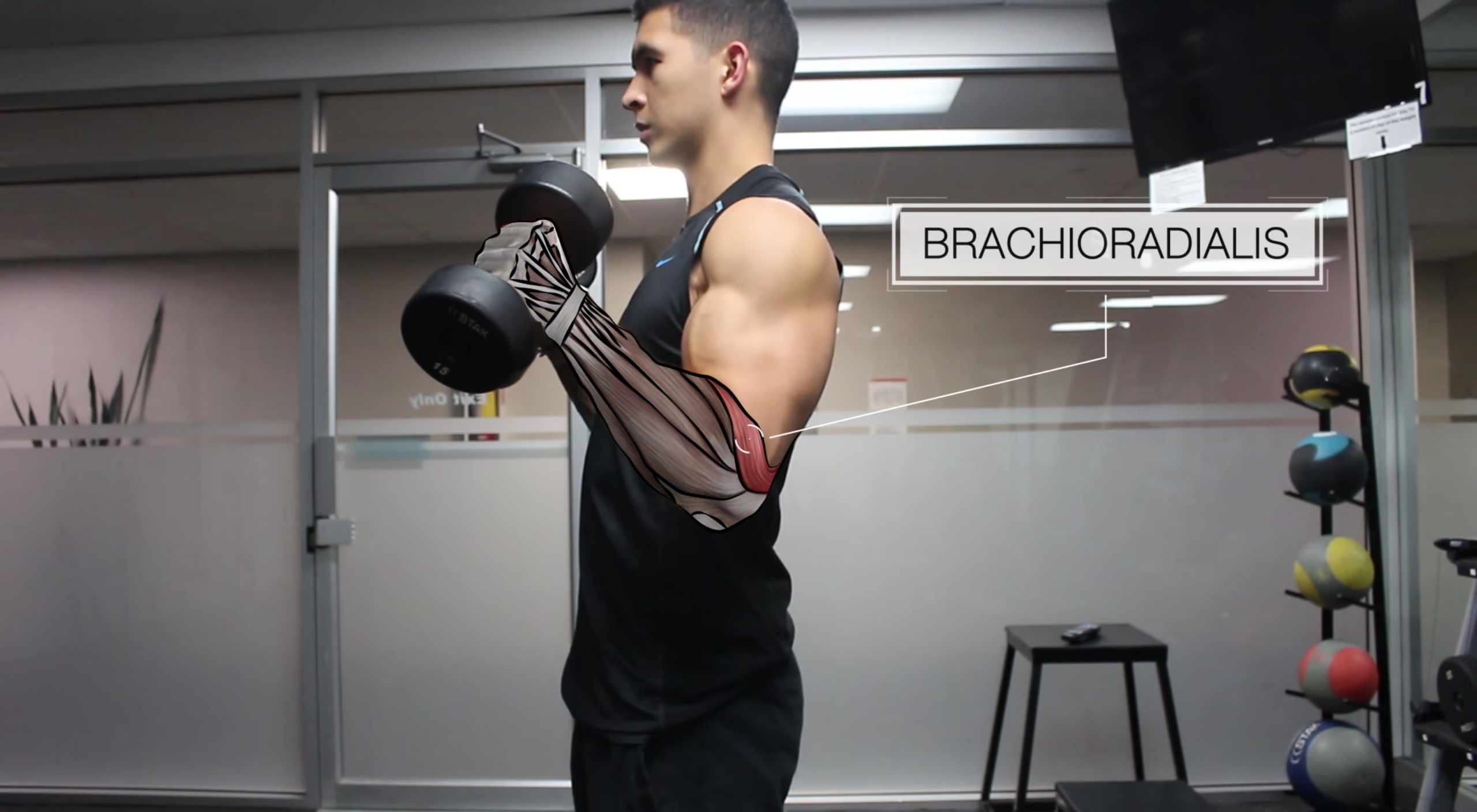
This exercise is going to help target the brachioradialis, which is a prominent muscle in the forearm which contributes to overall forearm mass.
How prominent the brachioradialis is in your forearm will depend on your genetics, as your genetics determines both how low the muscle inserts and how quickly it can grow.
Regardless of your genetics, you can improve this muscle by using reverse curls.
As shown in this study, this exercise increases the involvement of thebrachioradialis and reduces the use of the biceps, due to the pronated grip used.
Biceps are still involved in the movement but are used far less than a typical bicep curl as they are mechanically disadvantaged with this grip.
Unlike other forearm muscles, the brachioradialis doesn’t cross over the wrist joint, which means that it can’t be trained with wrist flexion or extension alone.
Adding in a reverse curl movement that involves elbow flexion is essential for forearm development.
Really enjoy digging into the research of forearm training? Then you'll absolutely love working with my team of highly-qualified trainers and nutritionists (plus myself!); in the process of guiding you through the process of achieving your dream physique in the time-efficient way possible, we'll also make sure you understand the science behind it all. Find out more here:
Click the button below to find out more about the 3-on-1 coaching program:
↓
Exercise 5: Wrist Rollers
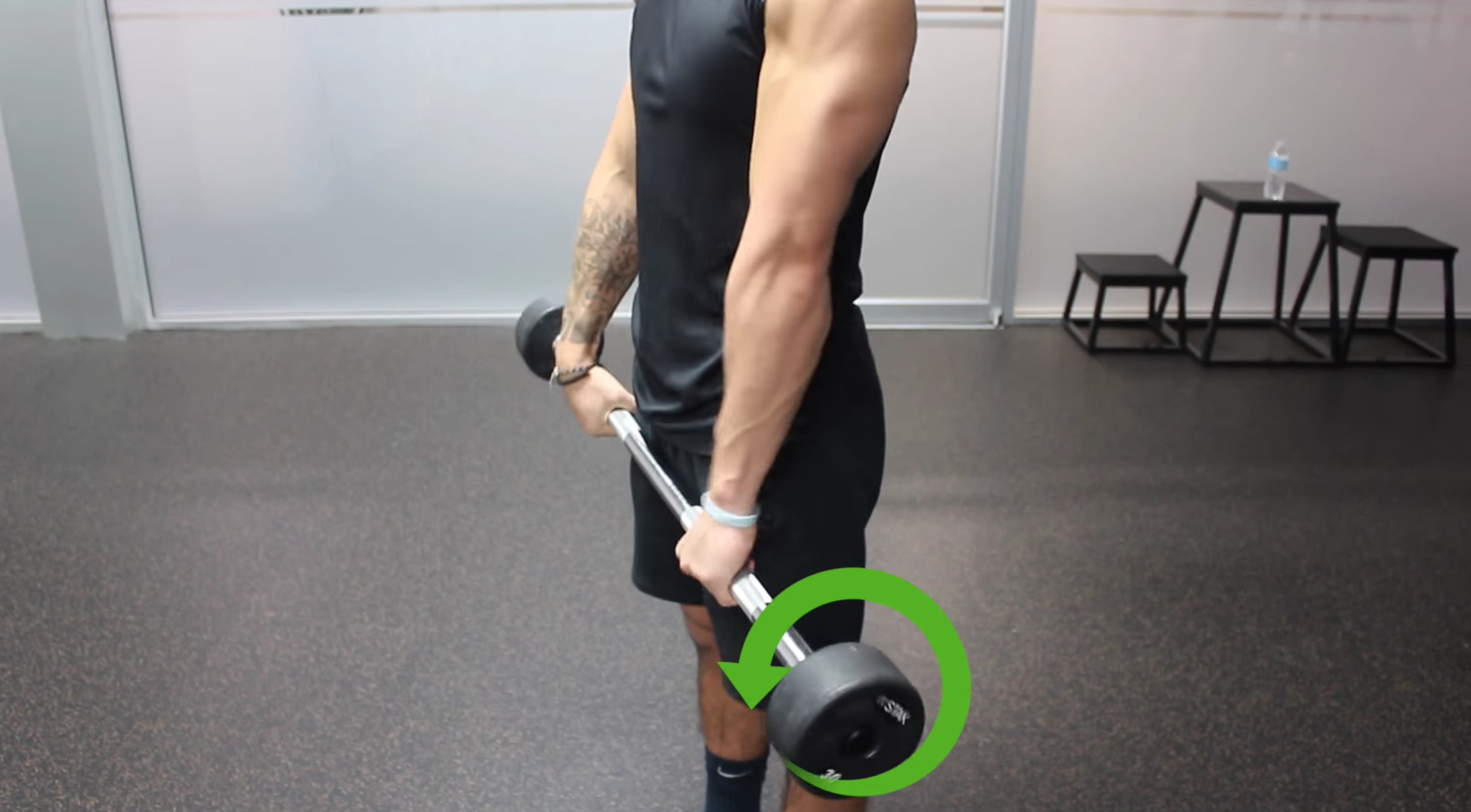
This last movement can be used as a finisher exercise to induce metabolic stress and fatigue your forearms.
Metabolic stress is one of the primary mechanisms triggering muscle growth (study, study), and so this exercise is perfect to add in at the end of a forearm routine (or any workout for that matter).
To perform this exercise, grab a bar, and rotate it forwards as quickly as possible for 30 to 60 seconds. Quickly rotate the bar backwards, and to finish, rotate it backwards as fast as possible for 30-60 seconds.
This movement allows you to work both the flexors and extensors of the forearm in one set. To progress, simply use a heavier bar over time.
Given this is a finishing exercise, it may be more difficult to increase the weight compared to your primary movements at the beginning of your workout as you will be fatigued.
How to integrate forearm training into your current routine
So, how do you integrate forearm training into your current routine? I suggest the following...
Add reverse curls into your current arm training (e.g. arm day, pull day). If you have an arm day or pull day, add reverse curls in that day.
According to a study on high-frequency and low-frequency handgrip training, forearms respond best to being trained 2-3x per week.
Be sure to use lighter weights and higher reps for wrist movements in order to avoid any initial wrist pain.
Make sure to perform these exercises after your upper body workouts so that you can avoid fatiguing your grip strength before you start your workout.
An example weekly forearm workout may look something like this:
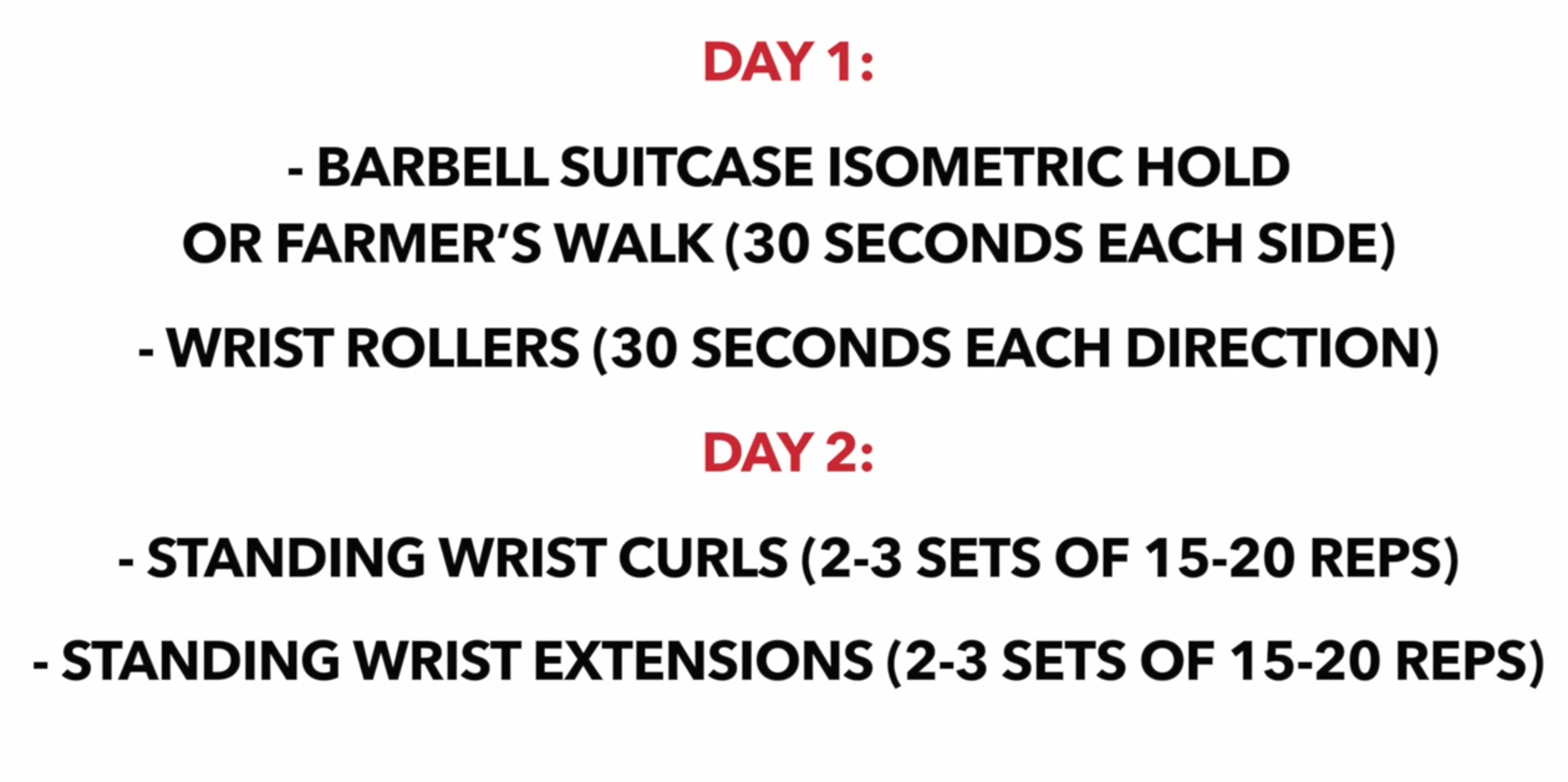
Conclusion
Forearms are similar to abs. Some people naturally have them, while others don't.
As with all muscle groups, some of your results are going to be dictated by your muscle insertions and genetics.
Regardless of these factors (which are out of your control), correct training and progression will help you get results.
If you want to build muscle and lose fat, I recommend taking my quiz, which will help you figure out exactly what you need to do step-by-step:
Click the button below to take my analysis quiz to discover the best program for you:
↓
I hope you enjoyed this article and found it useful! Don’t forget to give me a follow and connect with me on Instagram, Facebook, and Youtube as well, in order to stay up to date with my content. Cheers!

